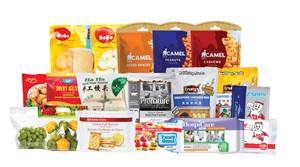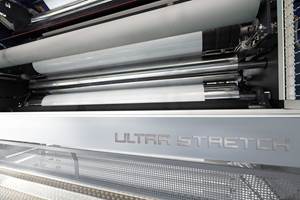April 2025: Mixed Bag for Prices of Volume Resins
The end of the first quarter marked higher prices for polyolefins and relatively flat pricing for nearly all other resins.
Source: Getty Images
Prices of volume resins going toward the second quarter were indeed a mixed bag — higher for polyolefins, a bit higher for polyvinyl chloride (PVC) and flat for all other resins. Projections for at least the early second quarter, which typically exhibits an uptick in demand, were also mixed. The potential for some upward movement included prices of polyethylene (PE), polystyrene (PS), polyethylene terephthalate (PET) and acrylonitrile butadiene styrene (ABS), with flat-to-downward movement for prices of polypropylene (PP), PVC, polycarbonate (PC), and nylons 6 and 66.
Key drivers include overall slower demand, lower plant operating rates, higher supplier inventories in some cases, and improved availability and steadier prices for most key feedstocks following the end of planned production turnarounds and some unplanned disruptions. Looming over these was the uncertainty of the degree of impact from ongoing tariff threats.
These are the views of purchasing consultants from Resin Technology Inc. (RTi); senior analysts from Houston-based PetroChemWire (PCW); CEO Michael Greenberg of Resintel, the market intelligence service of The Plastics Exchange; Scott Newell, executive VP polyolefins at distributor/compounder Spartan Polymers; and Mike Burns of Plastic Resin Market Advisors.

PE Prices Up
PE prices moved up 5¢/lb in January, and suppliers were seeking another 5¢/lb increase for February and 7¢/lb for March, according to PCW’s associate director for PE, PP and PS, David Barry; Resintel’s Greenberg; Mike Burns of Plastic Resin Market Advisors; and Kevin Mekaru, RTi’s senior ´óĎó´«Ă˝ leader commodity plastics. These sources generally expected that another increase had implementation potential but definitely not both. Says RTi’s Mekaru, who ventured prices would remain flat through the March-April time frame, “The fundamentals — lower feedstock costs, high inventories and lower exports, particularly as tariffs come into play — do not support an increase.”
PCW’s Barry notes that suppliers were intent on increasing prices further, and that spring feedstock and resin plant turnarounds were enabling them to build inventories. Also, that domestic demand was described as steady/unremarkable. “Buyers did not see the spot market indicating an upward movement — although spot prices moved up in January by 3 to 5¢/lb — they remained flat through February.” He notes that if suppliers got their second 5¢/lb price hike through, there was little chance of any further price increases in March. He also reports that traders were expecting exports to be flat-to-down in March due to higher export prices.
Plastic Resin Market Advisors’ Burns notes that, “The influence of the industry indexes may be the biggest challenge for processors,” despite market fundamentals that remain unchanged from last year, and the fact that suppliers will continue to rely on the export market to manage continued record production rates. He ventures high warehouse inventories and shipping challenges will favor the domestic processor through midyear. “Nonmarket activity and competitive prices should be expected in Q2.”
Describing the domestic spot market as less exciting versus exports in the year’s first month and processors’ inventories as balanced to ample, Resintel’s Greenberg saw strong resistance to the February increase. He ventures that if supply/demand dynamics become tighter and exports resurged, “with a little luck and no extraordinary factors coming into play,” suppliers could implement an increase of 2 to 3¢/lb in March.
PP Prices Up Again, Then Flat?

PP prices in February moved up another 4¢/lb in step with propylene monomer after the January 5¢/lb increase. Suppliers were out with nonmonomer increases of 2 to 3¢/lb, which were largely moved up to March, according to PCW’s Barry, Spartan Polymers’ Newell, Resintel’s Greenberg and Paul Pavlov, RTi’s VP of PP and PVC. Overall, these sources cite monomer production issues driving the upward price movement and all saw potential for flat-to-downward pricing in the March-April time frame.
These sources did not anticipate implementation of suppliers’ margin increases. As stated by Resintel’s Greenberg, “We find it historically difficult for suppliers to implement a margin-enhancing price increase in addition to a cost-push increase. It is like pouring salt on a processor’s wound. A margin gain is more palatable when monomer prices come off, and resin prices drop less than production costs.” PCW’s Barry similarly notes that buyers feel that suppliers need to boost plant production rates — still at well below 80% — before such increases can go through.
Moreover, PP demand has been below average for several months, with Spartan Polymers’ Newell noting, “The sentiment is very bearish — not a ton of excitement — but there is still time.” PCW’s Barry notes some pockets of strength in seasonal products such as storage bins and outdoor/gardening items, adding, “Some suppliers were hopeful that the automotive industry would shift into a higher gear after destocking in the second half of 2024, but any automotive demand strength was slow to materialize.” Meanwhile, Resintel’s Greenberg reports that processors’ inventories were low-to-average heading into a seasonally strong demand period, while suppliers’ inventories going into February were the lowest since July 2024.
PS Prices Flat-to-Up

PS prices in February were flat with an expected rollover in March despite suppliers’ price increase nominations of 3 to 4¢/lb for March, with a possibility of some upward movement, according to PCW’s Barry and RTi’s Pavlov. “Upward pricing certainly will not be demand driven but could be impacted by higher benzene prices as the driving season begins lowering availability for plastics production,” PCW’s Barry says.
These sources saw demand as steady, with operating rates remaining around 50-60% and lower feedstock costs due to improved availability following planned turnarounds. Going into March, the implied styrene price based on a 30% ethylene/70% benzene spot formula was down 3.9¢/lb versus four weeks earlier, according to Barry.
PVC Prices Largely Flat

PVC prices in February moved up 2¢/lb owing to unplanned and planned shutdowns the previous month, and while a rollover was likely for March, an uptick in prices in April had some potential, according to RTi’s Pavlov. Demand, with the exception of PVC pipe-grade resin, continued to be at record lows, and supplier inventories were high. Plant operating rates were around 80%. “I expect relatively flat pricing as new housing starts appear to be muted due to high interest rates. This, along with a plateau in global PVC prices and weakened feedstock prices, could well offset the elevated seasonal demand we typically see.”
PET Prices Flat-to-Up

PET prices in February remained flat after their 5¢/lb drop late in the fourth quarter. An upward trend was likely within March and/or April based on raw material formulation costs that could be on the rise, according to RTi’s Mekaru. Demand seasonally picks up in second quarter, but the industry was evaluating how potential aluminum tariffs could impact the market. “Increased demand for PET (vs. aluminum) is likely to result in higher raw material costs,” Mekaru notes. While the domestic market continues to be well supplied — including a steady stream of PET resin imports — an increase in freight costs could reduce that volume.
ABS Prices Flat-to-Up
ABS prices approaching the end of first quarter appeared to be generally flat, mirroring demand and similar to fourth quarter levels, according to Mark Kallman, RTi’s VP of PVC, PET and engineering resins. However, prices could move up slightly due to some cost pressure from styrene monomer and butadiene feedstocks, though benzene’s still attractive pricing could set that off. There was concern regarding the potential impact of tariffs to Canada and Mexico. Of note: INEOS is transferring its production to Mexico, following the permanent shutdown of its Ohio ABS plant, which accounted for nearly 20% of North American ABS production.
Still, ABS imports will continue to be plentiful due to that domestic production loss. The year 2024 saw an increase of 25% in imports over 2023, Kallman maintains. He notes that tariffs on those imports could result in domestic suppliers increasing production rates, which have been around 80%. The return of automotive demand was a bright spot, although possible tariff impacts were a concern, particularly as they relate to supply chain issues. There was a similar expectation for the construction sector in Q2, but Kallman notes that while it could show an increase in demand, this sector could also muddle through as in 2024.
PC Prices Flat-to-Down
PC prices appeared to be flat to slightly down, owing to unimproved demand, plenty of supply and low benzene prices, according to RTi’s Kallman. Because there are no PC imports from either Canada or Mexico,the impact of potential tariffs to those countries is not an issue, but there are plenty of imports from Pacific Rim countries, with import volumes up 10% in 2024 over the previous year. “At this point, PC prices could continue to be flat, with demand somewhat steady, barring any tariff issues,” Mekaru said. As previously reported, due to China’s major expansion of PC capacity, SABIC shutdown its PC plant in Europe, and Trinseo was closing one European plant.
Prices of Nylons 6, 66 Flat-to-Down
Prices of nylon 6 appeared to be ending this quarter flat to slightly down due to lower overall demand and no substantial increases in feedstock costs, according to RTi’s Mekaru. This after flat pricing through the second half of 2024. “There are a lot of discussions where tariffs may play a role in the supply chain, with the most concerning trade route being China,” Mekaru says.
Prices of nylon 66 were heading toward Q2 flat to slightly down, owing to lower feedstock costs, particularly benzene, and demand which was not particularly strong as indicated by lowered production rates, estimated to be under 80%, according to RTi’s Kallman. While healthy imports continue to exist for both nylon 66 and 6, there has been less need for the material from other regions. According to Kallman, both reinforced and lower cost nylon 6 and PP compounds have taken a bite out of nylon 66. As previously reported, evidence of this includes Ascend Performance Materials’ move to permanently shut down its South Carolina nylon 66 plant which produced fiber and film, with that production now added to Ascend’s large Florida plant along with nylon 66 molding production.
Related Content
Flexible-Film Processor Optimizes All-PE Food Packaging
Tobe Packaging’s breakthrough was to create its Ecolefin PE multilayer film that could be applied with a specialized barrier coating.
Read MoreDelivering Increased Benefits to Greenhouse Films
Baystar's Borstar technology is helping customers deliver better, more reliable production methods to greenhouse agriculture.
Read MoreThe Fundamentals of Polyethylene – Part 1: The Basics
You would think we’d know all there is to know about a material that was commercialized 80 years ago. Not so for polyethylene. Let’s start by brushing up on the basics.
Read MorePrices Flat-to-Down for All Volume Resins
This month’s resin pricing report includes PT’s quarterly check-in on select engineering resins, including nylon 6 and 66.
Read MoreRead Next
March 2025 Resin Pricing: Commodity Resin Prices Firm Up
Unplanned and planned production disruptions, rising feedstock costs and variables such as the potential impact of pending tariffs all factor in.
Read MorePrices Generally Trending Upward for the Five Commodity Resins
Scheduled and unscheduled production disruptions, and projected higher feedstock costs could be key factors.
Read MorePrices of Volume Resins Drop by Year-End
Entering 2025, prices of major commodity and volume resins are generally in a ‘buyer’s market.’
Read More












